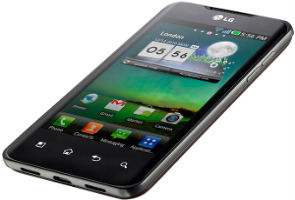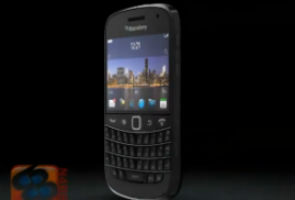This is a global GSM phone. It can be used with T-Mobile USA and AT&T, but without 3G.
Introduction:
It's no secret that the
Sony Ericsson Xperia X10 was somewhat of a letdown considering it was pegged as the mobile giant's multimedia powerhouse. On paper, it looked great, but the reality was the likes of HTC's Sense UI made Sony Ericsson's Android skin feel more like a beta than a final release. The
Sony Ericsson Xperia arc therefore represents a reboot - curvaceously sexy, endowed with a new screen technology and a revised UI, Sony Ericsson hopes it can mend some perceptions the X10 created- and from the offset, the odds are already looking more favourable for Sony Ericsson's new flagship.
Design:
We said it in our introduction - this is a sexy phone. At just 8.7mm in the middle, which gradually becomes 10mm at both ends, it feels waif-like in the hand in the best way possible. Without fail, everybody who held this phone commented on the slickness of design. The arched profile makes it more comfortable to hold and handle and lends to offset the bulk the 4.2” display could potentially lumber the handset with.
You can compare the Sony Ericsson Xperia arc with many other phones using our Size Visualization Tool.
The
screen is a Super LCD, with 480x854 pixels measuring in at 4.2". In turn, while the resolution isn't going to set the Sony Ericsson arc apart, the fact that it's graced with Sony's BRAVIA engine that the company uses in its award-winning flat screen TVs does. We can attest that there is a difference as photo and video playback is truly bright and vivid, though we nevertheless prefer Super AMOLED, as it enables these vibrant colors anywhere throughout the interface. The display is comfortable to use in the bright outdoors which is great, though viewing angles aren't what we'd hope from a premium screen. Nevertheless, when looked at head-on, the screen delivers a distinctly premium viewing experience.
Under the screen are three thin
Android navigational buttons – back, home and menu. They are reminiscent of what we have on the other phones in the Xperia line, and are illuminated, however, their icons aren't, which is somewhat unintuitive. The three keys have a nice rubbery feeling to them when pressed and are very easy to operate.
The Sony Ericsson Xperia arc comes in a “Midnight Blue” and “Misty Silver” version, both of which look stunning. The whole design is made of quality plastic which keeps the weight down, so while not as robust as aluminum unibody handsets for example, the thinness and lightness endows the Sony Ericsson Xperia arc with a huge amount of appeal.
The
camera sensor is placed in the upper edge on the back - which means you have to be careful not to place your finger over the lens when shooting. Combine that with the rather smallish and somewhat hard to press shutter key on the right near the lower edge, and you definitely need to hold the phone with two hands when taking a picture, unless you use the touchscreen. In addition, there is no front facing camera, which leaves video calls out of the equation.
The other design element that classes up the Sony Ericsson Xperia arc is the
chromed band surrounding it, which encompasses all the rest of the buttons and openings – the volume rocker and microUSB port up right, the 3.5mm audio jack up left, as well as the cover of the microHDMI port and the power/lock button at the very top - which is unfortunately small and takes some getting used to.
| | | |
The sides of the Sony Ericsson Xperia arc |














































